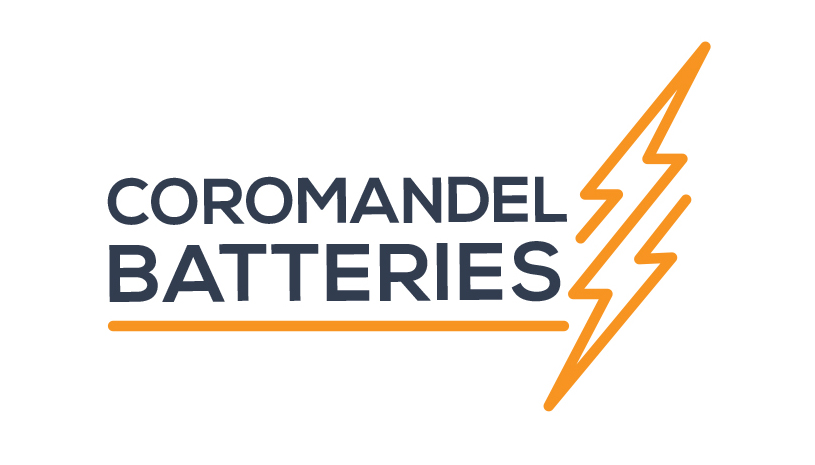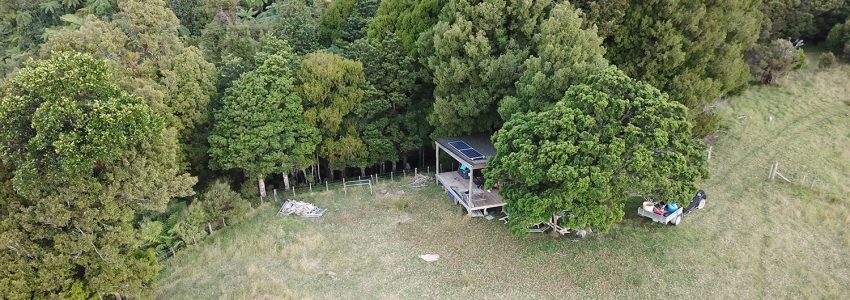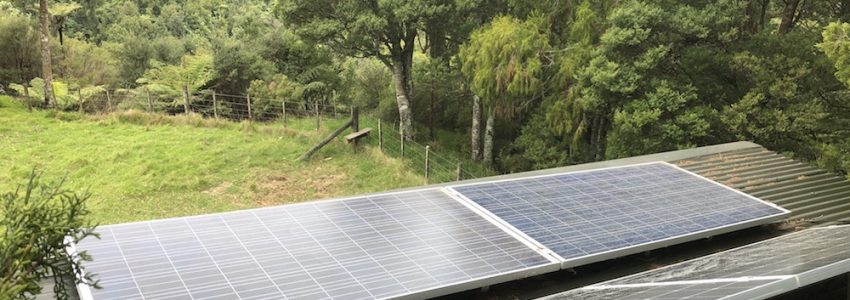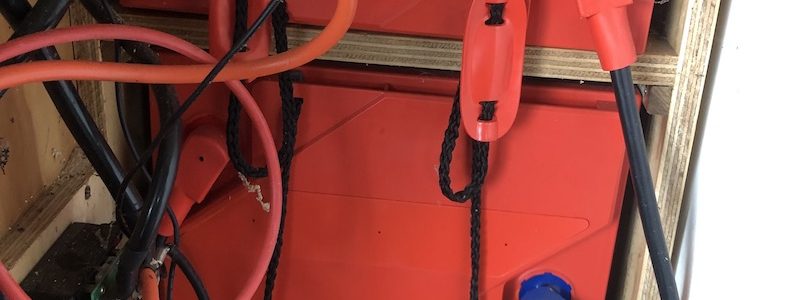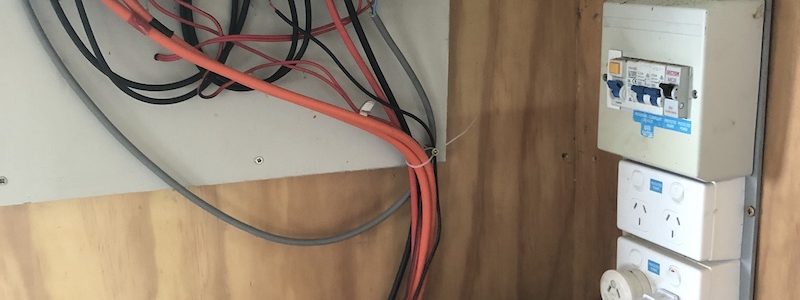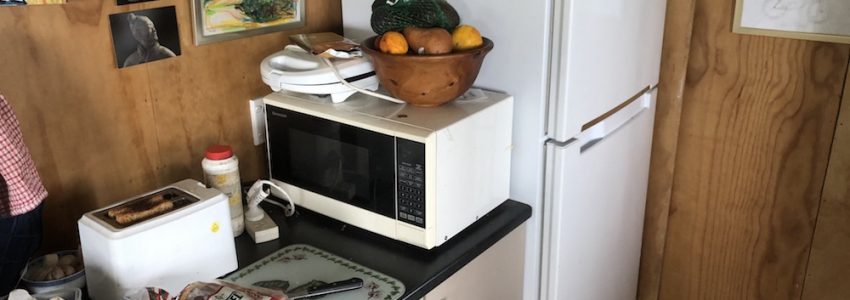This “tiny house” is in a remote spot at the back of a farm in the Coromandel and accommodates up to 3 people with most of the comforts of a normal on-grid house. It is in use year round but only half the time, for periods of 2 to 5 days at a time.
Case study: Tiny house
Details
This tiny house is 7.2m x 3.6m inside plus deck and has 4 x 300 watt solar panels on the roof, in 2 strings of 2 panels. This is not an ideal site for solar panels, being partly situated under large kahikatea trees. However with the solar panels facing due north and one set tilted to 35 degrees it gets good sun from around 10am to 4pm in winter and longer in summer. It is interesting to note that in the middle of winter the power from the tilted panels is around double that of the flat mounted panels.
Charging is from a pair of basic 40A MPPT solar controllers – one controller for each string of two panels (600W per string). In peak sun each set of two panels will max out at around 28 amps. The four panels were too much for a single 40A controller hence there are two. Both controllers are set to the same charge parameters via the “User” setting for battery types – 27.6V for bulk charge and 27.0V for float. The charge controllers have a temperature sensor and automatically provide temperature-based voltage compensation for higher and lower temperatures.
The inverter is a 2000 watt pure sine-wave model which can handle the highest loads which are the microwave, toaster and kettle. The low power kettle and toaster can be used at the same time (inverter starts beeping on overload to warn you for about 5 seconds before shutting off), but not if the microwave is in use which is the highest current draw (1200W or about 55 amps at 24V via the inverter). The fridge is a Samsung inverter model with top mounted freezer (a more energy efficient configuration than the more convenient freezer on the bottom design). It draws about 70W (3A) when running and if necessary the fridge compartment can be turned off and the freezer compartment used as a fridge – handy in the middle of winter if sun is short. In winter the kettle is boiled on the gas hob rather than using the electric jug.
Cooking is via a gas hob and a separate shower utility has a gas powered Challenger califont. Water is via gravity feed so there is no water pump.
The batteries are a set of 4 x Narada 6REXC-300 batteries set up in series for 24V. At 70% depth of discharge this battery bank provides around 5kWh of usable storage which is easily enough for 5 days of use even in cloudy weather. With this size battery bank and a generous amount of solar panels there is no need to have a generator.
Appliances in the case study
Powered by the inverter:
- Samsung inverter fridge/freezer
- 800 watt microwave
- 700 watt low power toaster
- 650 watt low power kettle
- Makita power tool charging
- 4 recessed LED ceiling lights
- 4G to wifi repeater
- USB and wireless phone charging unit
- Sockets for laptop charging
Direct 24V powered
- Outside LED lights
- Fusion Marine stereo
- USB charging socket
Approximate costings
4 x Narada 6REXC-300 6V batteries $3040
4 x 300 watt panels $1200
panel mounting rails and tilt brackets $500
2000 watt pure sine wave inverter $600
2 x 40A MPPT charge controllers $660
Breakers, LED lights, meter, cable, consumer unit $700
Electrical wiring labour – 1 day $800
Total $7500
Documentation
Download technical documentation of the Narada 6REXC-300 battery here: 6REXC-300
